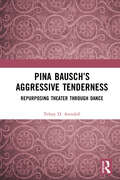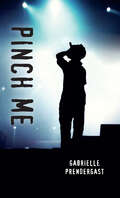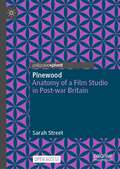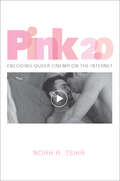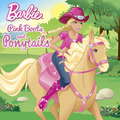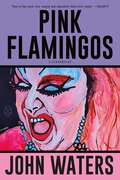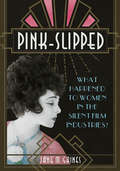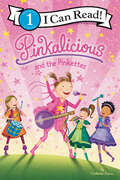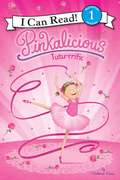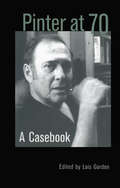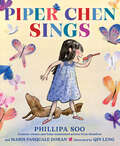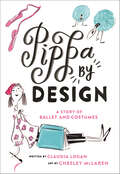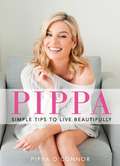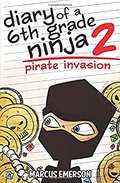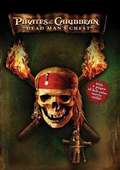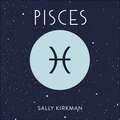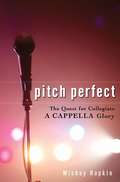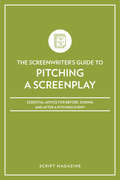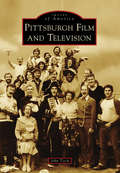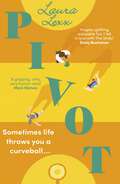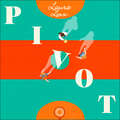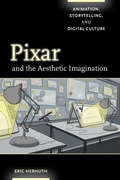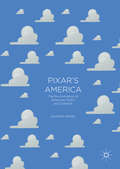- Table View
- List View
Pina Bausch’s Aggressive Tenderness: Repurposing Theater through Dance
by Telory D. ArendellPina Bausch’s Aggressive Tenderness: Repurposing Theater through Dance maps Bausch’s pieces alongside methodologies of key theater and film practitioners. This book includes discussion of a variety of Bausch pieces, including Sacre du Printemps (Rite of Spring 1975), Kontakthof (Meeting Place 1978), Café Müller (Café Mueller 1978), Nelken (Carnations 1982), Arien (Arias 1985), and Vollmond (Full Moon 2006). Beginning with her approach as one avenue of dance dramaturgy, the author connects the content expressed in these pieces with theoretical conversations, works from other artists inspired by Bausch, and her own experiences, providing an examination that is both academic and personally insightful. Arendell reads all of these theatrical and film approaches into Bausch’s work to highlight how the time frame involves a cross-pollination between Bausch and the other artists that looks both backward and forward in its influences. Ideal for students of dance and theater, Pina Bausch’s Aggressive Tenderness shows how Bausch’s Tanztheater speaks a kinaesthetic language, one that Arendell translates into a somaesthetic exploration to pair a repurposed body ethic with movements that present new forms of embodiment.
Pinch Me (Orca Soundings)
by Gabrielle PrendergastAfter another night of girls, music and booze, seventeen-year-old pop star Darius Zaire falls out of bed and lands on the cruddy floor of his old bedroom. No mansion, no luxury cars, no platinum records. Now he's just ordinary Darren Zegers. Some kind of nightmare has erased everything that happened to change Darren the dweeb into Darius the multimillionaire. Now Darius has to face an ordinary day in the twelfth grade, suffering through remedial English and wondering what happened to the last three years, let alone all his fans and money. He desperately wants to return to his old life, but he is starting to worry that maybe this is reality, and it was his other life that was the dream. This short novel is a high-interest, low-reading level book for teen readers who are building reading skills, want a quick read or say they don’t like to read!
Pinewood: Anatomy of a Film Studio in Post-war Britain
by Sarah StreetThis open access book examines how Pinewood came to be Britain’s dominant film studio complex, focusing on key years following the Second World War. It presents a revisionist, micro history of the studio and its longevity during a particularly turbulentperiod, explaining Pinewood’s survival at a time when other major film studios such as Denham closed. This book also provides contemporary insights into how Pinewood’s technologies, practices, and filmmaking methods compared to Hollywood’s. Thirteen films produced in1946–47 are analysed in detail, tracking how economic pressures engendered many creative techniques and innovative technologies. Prevailing cultures of management and labour organization are foregrounded, as well as insights into being a studio employee. These are vividly brought to life through an in-depthfocus on the in-house studio magazine Pinewood Merry-Go-Round, which provides rare details of sports and leisure activities organized at the studios.
Pink 2.0: Encoding Queer Cinema on the Internet
by Noah A. TsikaIn an era where digital media converges with new technologies that allow for cropping, remixing, extracting, and pirating, a second life for traditional media appears via the internet and emerging platforms. Pink 2.0 examines the mechanisms through which the internet and associated technologies both produce and limit the intelligibility of contemporary queer cinema. Challenging conventional conceptions of the internet as an exceptionally queer medium, Noah A. Tsika explores the constraints that publishers, advertisers, and content farms place on queer cinema as a category of production, distribution, and reception. He shows how the commercial internet is increasingly characterized by the algorithmic reduction of diverse queer films to the dimensions of a highly valued white, middle-class gay masculinity--a phenomenon that he terms "Pink 2.0." Excavating a rich set of online materials through the practice of media archaeology, he demonstrates how the internet's early and intense associations with gay male consumers (and vice versa) have not only survived the medium's dramatic global expansion but have also shaped a series of strategies for producing and consuming queer cinema. Identifying alternatives to such corporate and technological constraints, Tsika uncovers the vibrant lives of queer cinema in the complex, contentious, and libidinous pockets of the internet where resistant forms of queer fandom thrive.
Pink Boots and Ponytails (Barbie)
by Alison Inches Random HouseGirls ages 3-7 will love this full-color storybook based on the latest Barbie Sisters movie, releasing in fall 2013 on DVD and Blu-ray.
Pink Flamingos: A Screenplay
by John WatersThe return of a spectacular, reviled, and iconic classic of American filth! John Waters takes us back to the scene of his original crime against good taste. Watch as Babs Johnson fights to hold on to her title as “Filthiest Person Alive,“ fending off the craven attempts to dethrone her by her nemeses Connie and Raymond Marble.Read along as Waters takes us on a romp through his camp and filthy vision of Baltimore, from nefarious baby-stealing lesbians to scenes of unspeakable things done to unsuspecting chickens, to the film’s iconic and revolting coup de grace (no spoilers, but it is just as stomach-churning on the page more than fifty years later!). Pink Flamingos is John Waters at his provocative, disgusting, piety-puncturing best, with the hellish and hilarious trash masterpiece that first made him a household name.
Pink-Slipped: What Happened to Women in the Silent Film Industries? (Women and Film History International)
by Jane M GainesWomen held more positions of power in the silent film era than at any other time in American motion picture history. Marion Leonard broke from acting to cofound a feature film company. Gene Gauntier, the face of Kalem Films, also wrote the first script of Ben-Hur. Helen Holmes choreographed her own breathtaking on-camera stunt work. Yet they and the other pioneering filmmaking women vanished from memory. Using individual careers as a point of departure, Jane M. Gaines charts how women first fell out of the limelight and then out of the film history itself. A more perplexing event cemented their obscurity: the failure of 1970s feminist historiography to rediscover them. Gaines examines how it happened against a backdrop of feminist theory and her own meditation on the limits that historiography imposes on scholars. Pondering how silent era women have become absent in the abstract while present in reality, Gaines sees a need for a theory of these artists' pasts that relates their aspirations to those of contemporary women. A bold journey through history and memory, Pink-Slipped pursues the still-elusive fate of the influential women in the early years of film.
Pinkalicious and the Pinkettes (I Can Read Level 1)
by Victoria Kann#1 New York Times bestselling author Victoria Kann brings young readers a Pinkalicious I Can Read adventure that celebrates creativity and resourcefulness! Rock out with Pinkalicious and her friends in this Level One I Can Read. Pinkalicious and her friends want to start a band, but they don’t have any instruments! Pinkalicious will need to find a creative answer. When Pinkalicious realizes there are amazing sounds all around, she figures out what to do. Pinkalicious and the Pinkettes is a Level One I Can Read book, which means it’s perfect for children learning to sound out words and sentences. Readers can watch Pinkalicious and Peterrific on the funtastic PBS Kids TV series Pinkalicious & Peterrific!
Pinkalicious: Tutu-rrific (I Can Read Level 1)
by Victoria KannReaders can watch Pinkalicious and Peterrific on the funtastic PBS Kids TV series Pinkalicious & Peterrific!A fun Pinkalicious I Can Read story about ballet from New York Times bestselling author Victoria KannPinkalicious can’t wait to go to ballet class with her best friend, Alison, but things take a turn when there’s a mix-up and Pinkalicious ends up in the big kids’ class. Will Pinkalicious get lost among the dancers, or will she be able to jump to new heights?Perfect for little ballerinas everywhere, Pinkalicious: Tutu-rrific is a Level One I Can Read adventure and is carefully crafted using short sentences, familiar words, and simple concepts for children eager to read on their own.
Pinochle is the Name of the Game
by Walter GibsonHave you ever watched a hand of this fascinating game and wished you knew how to play? Or do you already know how and want to play better? Well, here's your opportunity to "hire" one of the game's foremost authorities as your personal "pro." Watch him deal out a sample hand and show you how to play it. His play-by-play instructions, written for the beginning player, will guide you confidently through the fundamentals. And with the ease that comes with confidence, you will quickly master the finer points of the game. It is on this gamesmanship that those already familiar with the game can sharpen their skills. Included are the rules for two-, three-, and - four-handed pinochle, as well as for auction pinochle and auction pinochle with partners.
Pinter at 70: A Casebook (Casebooks on Modern Dramatists #Vol. 30)
by Lois GordonThis comprehensive and authoritative casebook includes cornerstone essays on Pinter's creative process, his politics, film adaptations, and acting career. It also includes a collection of photos found nowhere else that document Pinter's "golden time"--his early acting days in Ireland--, a substantial introduction, a chronology, and bibliography.
Piper Chen Sings
by Phillipa Soo Maris Pasquale DoranAn empowering story about a girl who turns her performance jitters into confidence when faced with singing a solo at her school concert. Inspired by the childhood experience of award-winning actress Phillipa Soo who originated the role of Eliza in Hamilton. <p><p>Piper Chen loves nothing more than to sing. She sings to the sun, and she sings to the moon. She sings to her stuffed animals and with the birds outside her window. So, when her music teacher asks if Piper would like to sing a solo in her school’s Spring Sing, all she can say is “yes!” But as practice continues, doubt and worry creep in and Piper’s confidence wavers. She feels like butterflies are having a dance party in her belly. At home, Piper finds Nai Nai, her grandmother, at the piano. They’ve always shared a love of music, and Piper knows if anyone can help her through the unsettling feeling in her stomach and to shine her brightest at the Spring Concert, it’s Nai Nai. <p><p>First time picture book writers and sisters-in-law, Phillipa Soo and Maris Pasquale Doran along with acclaimed illustrator Qin Leng have created a cheerful intergenerational and stunning story that inspires confidence in the face of nervousness <p> <b>New York Times Bestseller</b>
Pippa by Design: A Story of Ballet and Costumes
by Claudia LoganPippa by Design is a fun-filled read perfect for fashionistas and dancers-to-be, from author Claudia Logan and illustrator Chesley McLaren.Pippa does not finish every activity she starts or get picked for everything—unlike her sister Verity. Pippa does, however, love to draw fashion designs in her special sketchbook, while she waits in the hallway to pick up Verity at ballet practice.There’s a big hullabaloo when Verity announces that she’s been chosen to dance in a performance of The Sleeping Beauty, and another hullabaloo later when Pippa discovers her sketchbook has gone missing. But all isn’t lost—with the help of a secret admirer, new friends, and even her sister, Pippa finds herself invited into a world she never imagined, and a place where she truly belongs.Full of photos, artwork, and factual tidbits from the world of ballet, this is an entertaining and engaging narrative for middle-grade readers.
Pippa: Simple Tips to Live Beautifully
by Pippa O'Connor OrmondPippa O'Connor's easy style and approachability have won her a huge and loyal following. Now Pippa shares her top tips and insights for how to live well, look good and feel great.'The older I've become, the more confident I am in my own skin. I don't follow trends that I know won't suit me and I've learned to make the best of what I have.'This book is about sharing everything I've learned along the way. It's full of useful information - such as how to put on a face in ten minutes, the essential items every woman needs in her wardrobe, what to wear to a wedding, how to travel in style (and with kids!), easy ways to create a beautiful home and how to be the perfect hostess.'To me, anybody can be stylish, regardless of money, age or body shape. You don't need to spend a fortune to look and feel fabulous - far from it. Style is about using your imagination and feeling confident.'Pippa - Simple Tips to Live Beautifully is stuffed with practical tips and inspirational advice and is the book for everyone, aged 16 or 60, who wants to discover their own personal style and to build the confidence to celebrate it.
Pirate Invasion (Diary Of A 6th Grade Ninja Ser. #Bk. 2)
by Marcus Emerson Noah ChildAge Level: 9 and up | Grade Level: 4 and up My name is Chase Cooper, and this is my second diary as a 6th grade ninja. It's only been a month since my last entry, but in a school as crazy as mine, a month is an eternity. My school recently had a day where everyone talked like a pirate, but it didn't stop after that! It became worse as the week went on, and pretty soon there were rumors of a massive pirate invasion. I ignored the warnings because I thought they were a joke. Turns out... I was wrong. Now my entire school is in danger, and I'm the only one that can save it. Diary of a 6th Grade Ninja 2: Pirate Invasion is a funny thriller that's entertaining for kids, middle school students, and adults.
Pirates of the Caribbean: Dead Man's Chest, First Edition
by Irene Trimble Disney Book GroupJack Sparrow, Will Turner and Elizabeth Swann are back for a whole new adventure. Read all about their swashbuckling exploits in this exciting adaptation of the Walt Disney Pictures film, Pirates of the Caribbean: Dead Mans Chest.
Pisces: The Art of Living Well and Finding Happiness According to Your Star Sign
by Sally KirkmanYou are a Pisces. You are the romantic dreamer and idealist of the zodiac.The signs of the zodiac can give us great insight into our day-to-day living as well as the many talents and qualities we possess. But in an increasingly unpredictable world, how can we make sense of them? And what do they mean? This insightful and introductory guide delves deep into your star sign, revealing unique traits and meanings which you didn't know. Along the way, you will discover how your sign defies your compatibility, how to improve your health and what your gifts are. ***The Pocket Astrology series will teach you how to live well and enhance every aspect of your life. From friendship to compatibility, careers to finance, you will discover new elements to your sign and learn about the ancient art of astrology. Other audiobooks in the series include: Aries, Taurus, Gemini, Cancer, Leo, Virgo, Libra, Scorpio, Sagittarius,Capricorn, Aquarius, Pisces(P)2018 Hodder & Stoughton Limited
Pitch Perfect: The Quest for Collegiate A Cappella Glory
by Mickey RapkinPitch Perfectis a behind-the-scenes look at the bizarre, often inspiring world of collegiate a cappella groups. The first collegiate a cappella group, the Yale Whiffenpoofs, was founded by Cole Porter back in 1909. But what had been largely an Ivy League phenomenon has, in the past fifteen years, exploded. And it’s not what you think. There are now more than 1,200 a cappella groups at colleges across the country. The very best of these collegiate groups square off in the annual International Championship of Collegiate A Cappella—a showdown marked by wrenching close calls and exhilarating triumphs. And, really, where else can you hear Michael Jackson’s “Bad” in four-part harmony? In Pitch Perfect, GQ editor Mickey Rapkin follows a season in a cappella through all its twists and turns, covering the breathtaking displays of vocal talent, the groupies (yes, a cappella singers have groupies), the rockstar partying (and run-ins with the law), and all the bitter rivalries. Along the way are encounters with boldfaced names such as President George W. Bush, Prince, David Letterman, Barack Obama, Barbra Streisand, Hillary Clinton, Marisa Tomei, Amanda Bynes, Nick Lachey, Merv Griffin, Jim Carrey, Microsoft’s Paul Allen, John Legend, and Jessica Biel. At the heart of the narrative are three a cappella groups whose interactions are anything but harmonious: the historic Tufts Beelzebubs, founded more than forty years ago with 40,000 albums sold since—and struggling to record a new album that lives up to the hype; Divisi of the University of Oregon, a relatively new, all-female group attempting to overcome a loss in the 2005 championship; and the University of Virginia Hullabahoos, the so-called bad boys of collegiate a cappella, who will attempt to compete on a higher level this year while retaining their casual soul. Bringing a lively new twist to America’s fascination with talent showdowns and peerless performers, Pitch Perfect is sure to strike a chord with readers.
Pitching a Screenplay: Essential Advice for Before, During and After a Pitching Event
by Jeanne Bowerman Script Magazine EditorsCongratulations! You've written the next blockbuster hit! But...now what?Writing your screenplay is just the first step. If you don't take it out into the world and pitch it, your script will never get sold. Pitching a Screenplay: Essential Advice for Before, During and After a Pitching Event can help you take that next step. This collection of articles from Script Magazine will take you through the ins and outs of crafting and delivering a truly impressive pitch.Just how valuable are pitchfests? These articles explore what you can really expect to get out of spending your time and money at pitchfests. You will learn about pitchfest misconceptions and how networking and building relationships with producers can be the most valuable takeaway from any pitching event. You will learn how to prepare for a pitchfest: what research you need to conduct, what to bring, what to wear, and how to begin. These articles cover how to make a great first impression, the dos and don'ts of pitching, what phrases will make you sound like a rookie during a pitch meeting, and important tips to know before submitting your script. You will learn the 5 steps for pitching success, which include concentrating on the needs of the producers besides your own and turning rejection into connection. Pitching a Screenplay: Essential Advice for Before, During and After a Pitching Event also delves into the importance of listening, having both a prepared and improvisational phase of your pitch, and knowing your weaknesses.Contributors to this collection include Jeanne Veillette Bowerman (editor for Script Magazine), Lee Jessup (career coach to notable screenwriters), Jacob Krueger (writer of The Matthew Shepard Story), Stephanie Palmer (leader of the American Film Market's annual Pitch Conference), and Wendy Kram (producer and owner of L.A. FOR HIRE).Don't let your script gather dust of the shelf! Take the next step toward getting your vision produced with help from Pitching a Screenplay: Essential Advice for Before, During and After a Pitching Event.
Pittsburgh Film and Television
by John TiechCelebrated as the home of the first nickelodeon, Pittsburgh operated as a significant part of the film industry for the first 30 years of the 20th century. Unfortunately, the emergence of Hollywood and the evolution of the industry crippled Pittsburgh. Despite hard times, the Steel City avoided extinction and eventually became a cinematic powerhouse with the emergence of television and location filmmaking. Shows such as Chiller Theater and Studio Wrestling and movies like The Silence of the Lambs, The Deer Hunter, Night of the Living Dead, and The Dark Knight Rises are all part of Pittsburgh's rich entertainment history, which began in 1898. Pittsburgh proudly continues to produce film and television for a worldwide audience of all ages.
Pivot: A story of dropping the ball, picking it up again, and turning things around.
by Laura Lexx'Refreshing, hilarious and really uplifting - I fell in love with Jackie, Ros and the rest of the squad - and everyone else will too' HELLY ACTON, author of The Shelf'The book we need at the moment - a joyous celebration of female friendship and midlife. And as a netball player, I really did enjoy the attention to comic detail . . . Hilarious' CAROLINE CORCORAN, author of Five Days Missing'Hugely uplifting, enjoyable fun, I fell in love with the Skids!' DAISY BUCHANAN, author of CareeringSometimes life throws you a curveball . . . 58-year-old Jackie Douglas thinks she has everything she wants - kids, grandchildren, and a comfortable retirement with her husband, Steve. Until one afternoon she comes home to find Steve packing a bag and her comfortable life suddenly moves out of bounds.Her best friend Ros, a law firm boss with an appetite for life, laughter and (just the right amount of) wine, immediately leaps in to help Jackie back to her feet but soon finds herself feeling second best to Jackie's other priorities.Their barmaid/friend/wine protégé Jay is back home with her mum at nearly 30. Brilliant. After losing her job in London she's returned, working in the pub job she thought she'd left behind at 18.In tipsy search of something - anything - new, they wind up the leaders of a ramshackle, barely functional netball team: The Skids. Facing confusing exes, divorce, betrayals, financial woes and more, Jackie, Ros and Jay are about to discover that finding your team might just be the key to turning things around...
Pivot: A story of dropping the ball, picking it up again, and turning things around.
by Laura Lexx'Refreshing, hilarious and really uplifting - I fell in love with Jackie, Ros and the rest of the squad - and everyone else will too' HELLY ACTON, author of The Shelf'The book we need at the moment - a joyous celebration of female friendship and midlife. And as a netball player, I really did enjoy the attention to comic detail . . . Hilarious' CAROLINE CORCORAN, author of Five Days Missing'Hugely uplifting, enjoyable fun, I fell in love with the Skids!' DAISY BUCHANAN, author of CareeringSometimes life throws you a curveball . . . 58-year-old Jackie Douglas thinks she has everything she wants - kids, grandchildren, and a comfortable retirement with her husband, Steve. Until one afternoon she comes home to find Steve packing a bag and her comfortable life suddenly moves out of bounds.Her best friend Ros, a law firm boss with an appetite for life, laughter and (just the right amount of) wine, immediately leaps in to help Jackie back to her feet but soon finds herself feeling second best to Jackie's other priorities.Their barmaid/friend/wine protégé Jay is back home with her mum at nearly 30. Brilliant. After losing her job in London she's returned, working in the pub job she thought she'd left behind at 18.In tipsy search of something - anything - new, they wind up the leaders of a ramshackle, barely functional netball team: The Skids. Facing confusing exes, divorce, betrayals, financial woes and more, Jackie, Ros and Jay are about to discover that finding your team might just be the key to turning things around...
Pivot: A story of dropping the ball, picking it up again, and turning things around.
by Laura LexxA story of dropping the ball, picking it back up, and turning things around.58-year-old Jackie Douglas thinks she has everything she wants - kids, grandchildren, and a comfortable retirement with her husband, Steve. Until one afternoon she comes home to find Steve packing a bag and her comfortable life suddenly moves out of bounds.Her best friend Ros, a law firm boss with an appetite for life, laughter and (just the right amount of) wine, immediately leaps in to help Jackie back to her feet but soon finds herself feeling second best to Jackie's other priorities.Their barmaid/friend/wine protégé Jay is back home with her mum at nearly 30. Brilliant. After losing her job in London she's returned, working in the pub job she thought she'd left behind at 18.In tipsy search of something - anything - new, they wind up the leaders of a ramshackle, barely functional netball team: The Skids. Facing confusing exes, divorce, betrayals, financial woes and more, Jackie, Ros and Jay are about to discover that finding your team might just be the key to turning things around...(P) 2022 Hodder & Stoughton Limited
Pixar and the Aesthetic Imagination: Animation, Storytelling, and Digital Culture
by Eric HerhuthIn Pixar and the Aesthetic Imagination, Eric Herhuth draws upon film theory, animation theory, and philosophy to examine how animated films address aesthetic experience within contexts of technological, environmental, and sociocultural change. Since producing the first fully computer-animated feature film, Pixar Animation Studios has been a creative force in digital culture and popular entertainment. But, more specifically, its depictions of uncanny toys, technologically sublime worlds, fantastic characters, and meaningful sensations explore aesthetic experience and its relation to developments in global media, creative capitalism, and consumer culture. This investigation finds in Pixar’s artificial worlds and transformational stories opportunities for thinking through aesthetics as a contested domain committed to newness and innovation as well as to criticism and pluralistic thought.
Pixar's America
by Dietmar MeinelThis book examines the popular and critically acclaimedfilms of Pixar Animation Studios in their cultural and historical context. Whether interventionist sheriff dolls liberating oppressed toys (Toy Story)or exceptionally talented rodents hoping to fulfill their dreams (Ratatouille),these cinematic texts draw on popular myths and symbols of American culture. AsPixar films refashion traditional American figures, motifs and narratives forcontemporary audiences, this book looks at their politics - from the frontiermyth in light of traditional gender roles (WALL-E) to the notion of voluntary associations andneoliberalism (The Incredibles). Through close readings, this volume considers theaesthetics of digital animation, including voice-acting and the simulation ofcamera work, as further mediations of the traditional themes and motifs ofAmerican culture in novel form. Dietmar Meinel explores the ways in which Pixarfilms come to reanimate and remediate prominent myths and symbols of Americanculture in all their cinematic, ideological and narrative complexity.
